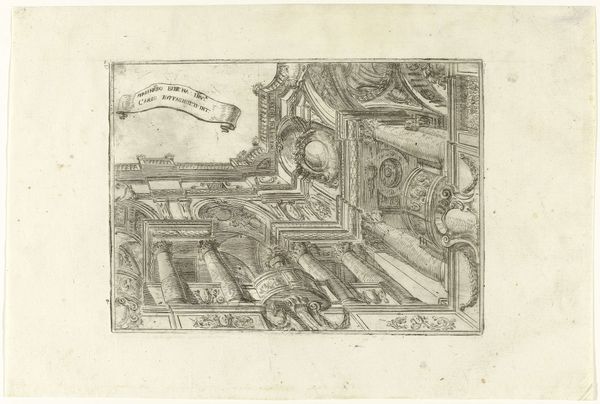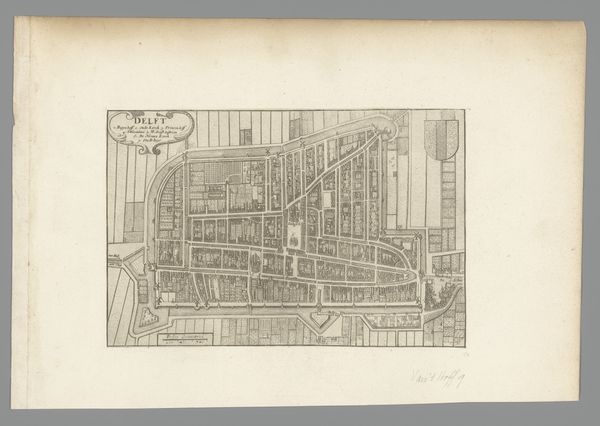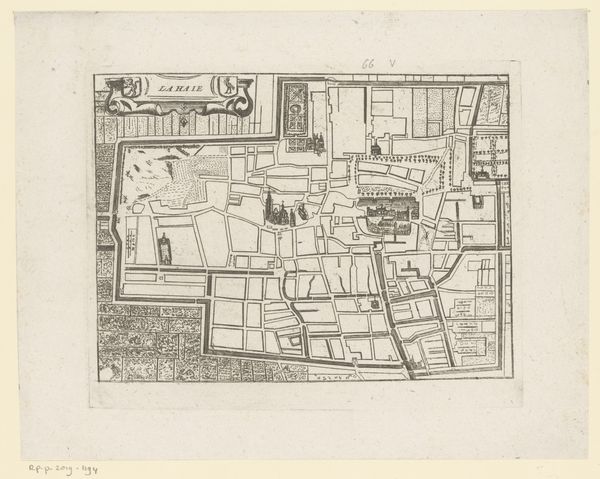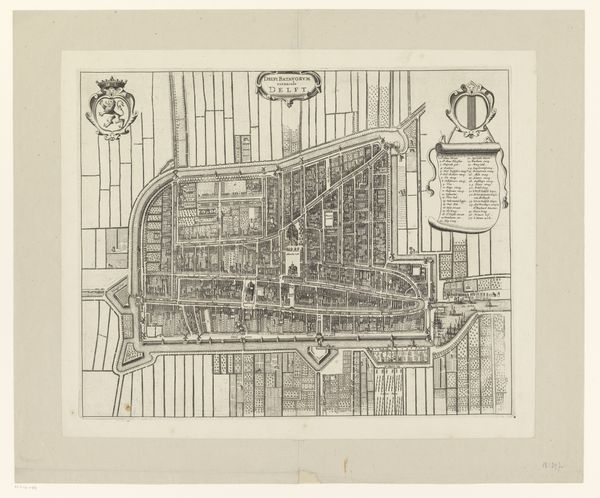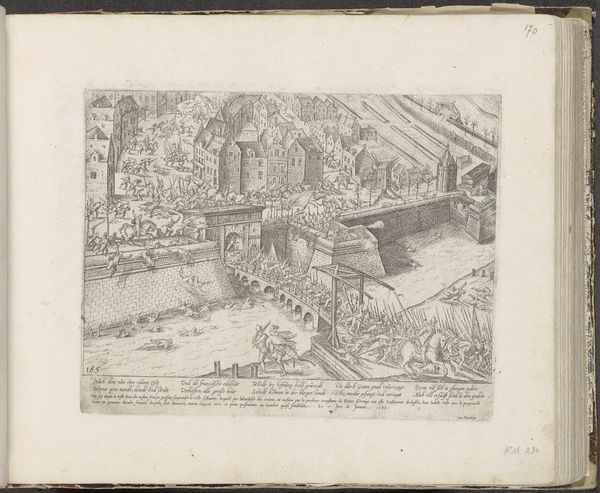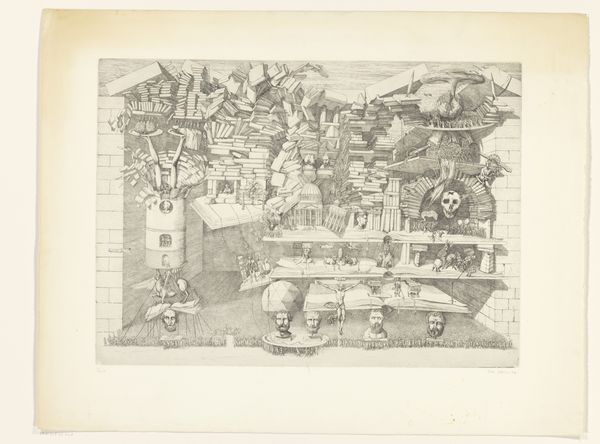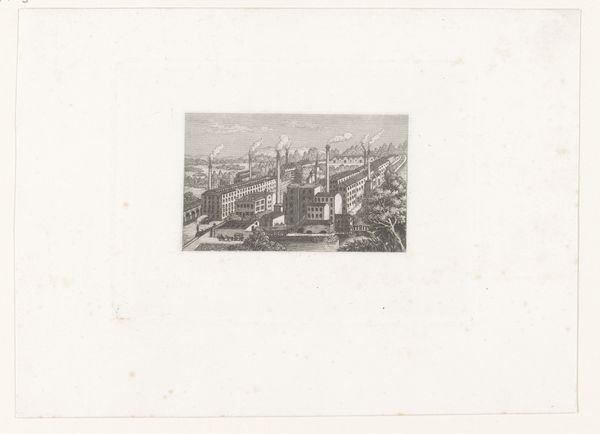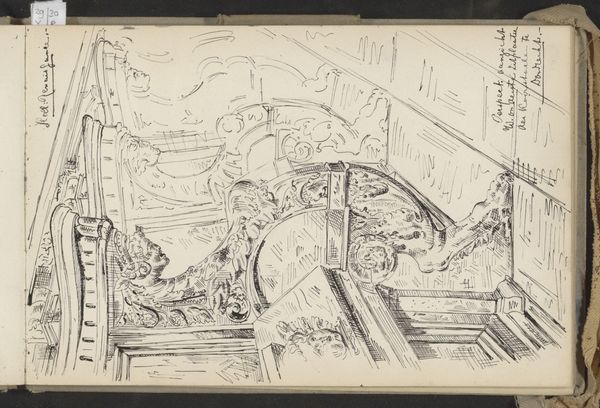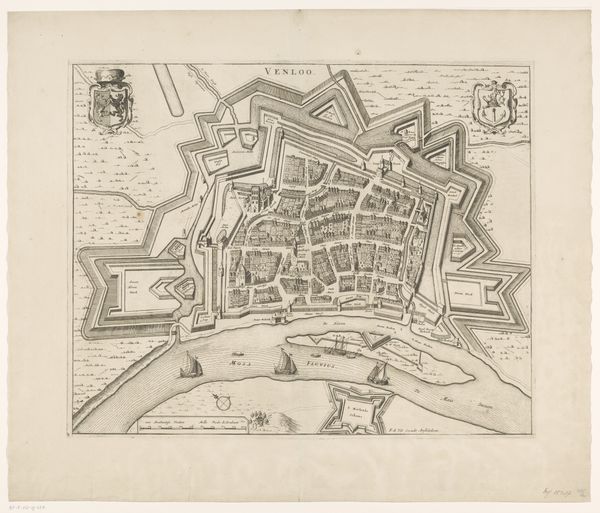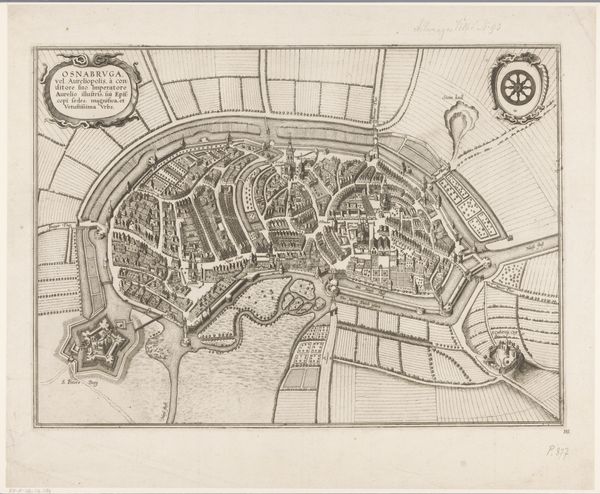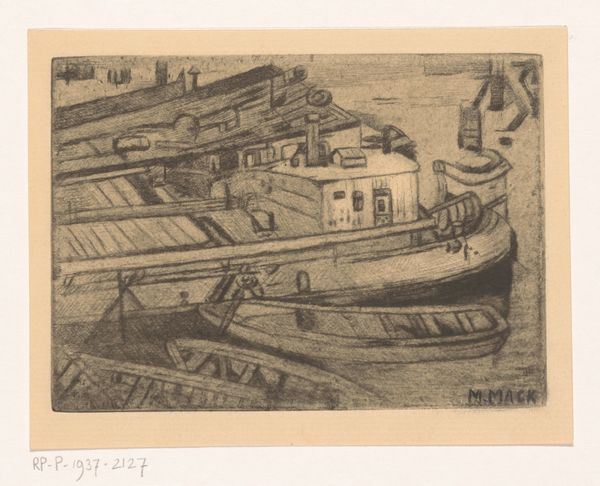
drawing, engraving
#
drawing
#
baroque
#
pencil sketch
#
old engraving style
#
pen-ink sketch
#
line
#
cityscape
#
engraving
Dimensions: height 187 mm, width 257 mm
Copyright: Rijks Museum: Open Domain
Curator: This delicate engraving, titled "Ontwerp voor een toneeldecor," translating to "Design for a Stage Set," was created in 1707 by Carlo Antonio Buffagnotti. Editor: Immediately, I notice the intense perspective – it almost makes me feel dizzy looking up at those towering architectural forms! Curator: Precisely! The artist uses line and shadow in the engraving to emphasize the grandeur and height of the structure. You can almost feel the weight of the materials. Editor: Right. Baroque theatrical designs often prioritized spectacle. One can imagine the kind of power these images could project, even in a small rendering like this, by emphasizing the scale and wealth associated with ruling families through dramatic architecture. It speaks to the political function of art at the time, glorifying hierarchy and control. Curator: Yes, this elevation amplifies the effect, shifting emphasis onto materiality and labour within this world. The detail within the repetitive column structure surely demanded high degrees of labor at many scales to manufacture and engrave. What sort of resources were required for these performances? The question becomes pressing when analyzing a sketch like this. Editor: Indeed. What societal structures had to be in place to realize these massive works? Think of the exploitative labor practices prevalent then. The splendor we see represented often came at a tremendous human cost. The image's display is very carefully framed around specific tastes to elicit these responses and not focus on peripheral costs or potential suffering, let alone ethical considerations about exploitation during that period in history. Curator: It brings an urgency and an implicit ethical value system behind artistic production practices, too. Buffagnotti clearly invested time and resources, skills he cultivated for the purpose. Was there ever pushback by others during that era questioning the artistic choices, or was that something we are only experiencing more often recently? Editor: These questions are a reflection of today's critical landscape on how we interact with materials around us. As the modern observer, our role today may be reexamining, with each generation having differing opinions about what historical records such as this are communicating culturally across decades. Curator: Exactly, thinking about process and its relationship to resources expands beyond simply what something is ‘of’. Thanks for that additional layer, especially given the artmaking contexts throughout different political systems globally, then and now!
Comments
No comments
Be the first to comment and join the conversation on the ultimate creative platform.
